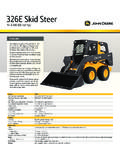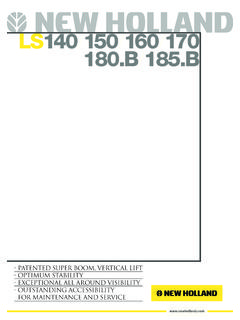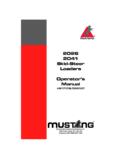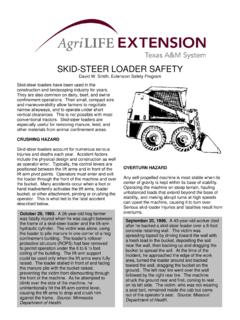Transcription of Determining speed from braking skid marks E - DVExperts
1 Expert forensic engineers are often asked by lawyers to determine vehicle movements before, during and after a crash. These movements can be determined in a number of ways depending on the information available. A key piece information is whether any skid marks were identified and their nature and location can leave different types of tyre-friction marks depending on the circumstances, and it is important to distinguish between them. The two most relevant to measuring the speed of a vehicle are braking skid marks , caused by a sliding non-rotating tyre; and scuffmarks (yawmarks), made by a rotating tyre slipping sideways. This article focuses on braking skid marks and how to determine speed from the length of the mark and the surface speed of a vehicle at the start of the skid marks can be calculated by using the speed from skid equation.
2 This equation is often expressed as:Where:V = speed of the vehiclef = coefficient of frictiong = = skid distanceThe co-efficient of friction is commonly referred to by crash reconstructionists as the drag factor . It is expressed as the ratio of the force of friction between two bodies and the force pressing them together. The coefficient of friction varies, depending on the materials in friction with each other. For example, when a car is sliding on black ice the co-efficient of friction is very low (that is, the tyre slides easily over the ice) and ranges from to On the other hand, a bitumen road produces a higher co-efficient (that is, the tyre does not slide on the surface easily) and can range from to or higher.
3 An average value of around to is commonly formula is independent of mass; it doesn t matter whether the car weighs 500kg or 5 tonnes. Vehicles should, theoretically, brake to rest over the same distance for a given speed and coefficient of friction between the tyres and road surface (tyres can affect the results).The skid marks for the vehicle shown in Figure 1 were approximately ten metres long. An important question in many motor vehicle accident cases is what the vehicle s speed was at the time the brakes were applied. Using the above formula we get the following: V = 2 x x x 10 = (or around 42 km/hr).Naturally enough, the accuracy of this result rests entirely on how accurately the skid marks are measured and the friction co-efficient decided.
4 For this reason, geodesic survey equipment a pacing wheel or survey tapes is often used to measure skid co-efficient of friction can be made more precise by using the vehicle involved in the incident (if it can still be driven) to carry out a skid-test at the site of the incident. Test-skidding is carried out and deceleration measured using a calibrated accelerometer. Caution is advised when vehicles and tyres are tested other than those of the vehicle involved in the collision. Skid-testing shows that alternative vehicle and tyre combinations can produce up to a 14% variation in the friction factor in dry conditions and up to 26% in the alternative is to use a drag-sled test, which uses tyre material fixed to the bottom of a weighted mass.
5 The mass is dragged along the road surface and the force required to drag the weight is measured, allowing the co-efficient of friction to be calculated. Other devices can also be used, such as the Munro Portable Skid Resistance once all the required information is available can the vehicle s speed prior to the skid marks be calculated. The authors are all specialists in accident investigation, reconstruction, failure analysis and safety solutions. Dr Grzebieta is based at the Department of Civil Engineering at Monash University; Dr Rechnitzer, Shane Richardson and Max Shifman are based with DVExperts International Pty Ltd.
6 PHONE (03) 9897 3486 EMAIL WEBSITE speed from braking skid marksBy Dr Raphael Grzebieta, Dr George Rechnitzer, Shane Richardson and Max ShifmanFigure 1: braking skid marks left by the 4WD vehicleNotes: These calculations are simplified and apply only to the condition where a vehicle skids to a stop. Where an impact occurs before a vehicle skids to rest, others related equations need to be used. 42 PRECEDENT ISSUE 76 SEPTEMBER/OCTOBER 2006







